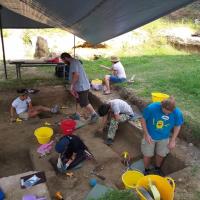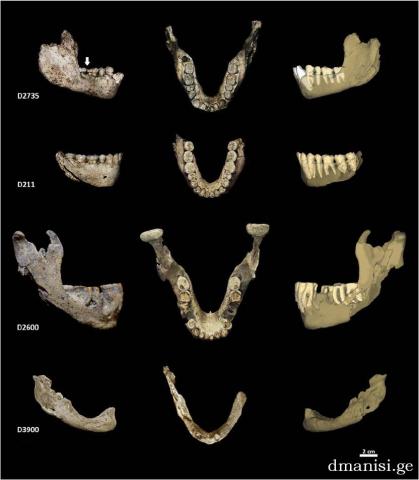Latest News






|
|
Margvelashvili et. al. published a paper Tooth wear and dentoalveolar remodeling are key factors of morphological variation in the Dmanisi mandibles in Proceedings of the National Academy of Sciences of the United States of America (PNAS), saying that tooth wear and related bone remodeling processes might explain the huge variation in Dmanisi mandibles.

Abstract
The Plio-Pleistocene hominin sample from Dmanisi (Georgia), dated to 1.77 million years ago, is unique in offering detailed insights into patterns of morphological variation within a paleodeme of early Homo. Cranial and dentoalveolar morphologies exhibit a high degree of diversity, but the causes of variation are still relatively unexplored. Here we show that wear-related dentoalveolar remodeling is one of the principal mechanisms causing mandibular shape variation in fossil Homo and in modern human hunter–gatherer populations. We identify a consistent pattern of mandibular morphological alteration, suggesting that dental wear and compensatory remodeling mechanisms remained fairly constant throughout the evolution of the genus Homo. With increasing occlusal and interproximal tooth wear, the teeth continue to erupt, the posterior dentition tends to drift in a mesial direction, and the front teeth become more upright. The resulting changes in dentognathic size and shape are substantial and need to be taken into account in comparative taxonomic analyses of isolated hominin mandibles. Our data further show that excessive tooth wear eventually leads to a breakdown of the normal remodeling mechanisms, resulting in dentognathic pathologies, tooth loss, and loss of masticatory function. Complete breakdown of dentognathic homeostasis, however, is unlikely to have limited the life span of early Homo because this effect was likely mediated by the preparation of soft foods.
